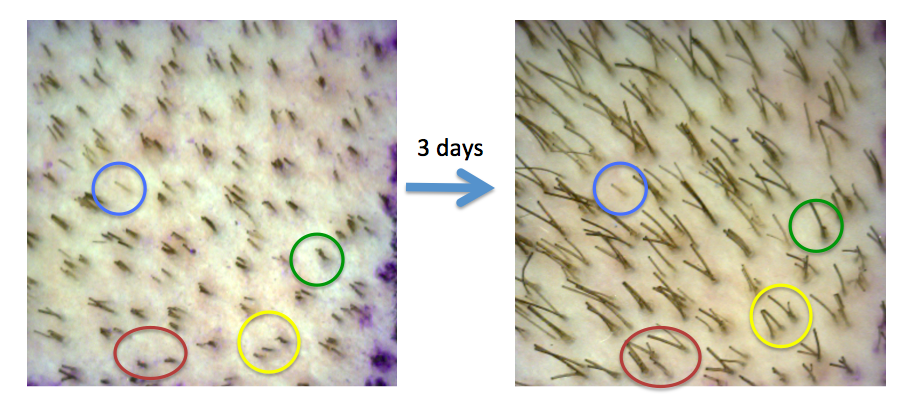The Phototrichogram: A Powerful Tool in Assessing Hair Loss and Growth
The phototrichogram helps assess hair growth patterns & treatment responses
The phototrichogram is a clinical tool I generally only use in my research - when I want to understand if a specific treatment is helping or not and quantify just 'how much' it helps. However, sometimes I will use the phototrichogram in patients with complex hair loss patterns. The phototrichogram involves comparison of two small 1 cm x 1 cm areas on the scalp at an interval of three days. On day 1, the hairs in the target 1 cm2 area are clipped to 1 mm and a photograph is taken. 2-3 days later the same areas is evaluated again
What information comes from the phototrichogram?
Several key pieces of information come from the phototrichogram. Hairs that grow over the 2-3 day period are deemed 'anagen' hairs. Hairs that don't grow or elongate are deemed 'telogen' hairs. Hairs that are not present at day 1 but present at day 2-3 are deemed anagen hairs. In addition, hair calibre can also be ascertained. Hairs greater than 40 um are terminal hairs.
Figure 1. The Phototrichogram. Hairs that do not elongate over a three day period are telogen hairs. The blue circle shows a telogen hair. The green circle shows one telogen hair and one anagen hair. The red circle shows a significant increase in hairs. Hairs that were not present at day 1 but present at day 3 are anagen hairs.
In general, the following information can be ascertained from a carefully conduced phototrichogram:
1. hair density
2 terminal hair density
3. vellus hair density
4. anagen hair counts
5. telogen hair counts
6. mean hair thickness
Conclusion
The phototrichogram is a powerful tool. It's not routinely employed in the clinical setting because most patients don't want their hairs clipped (patients come to see me for help with more hair - not less). Nevertheless, the phototrichogram remains a tool I call upon from time to time
This article was written by Dr. Jeff Donovan, a Canadian and US board certified dermatologist specializing exclusively in hair loss.

